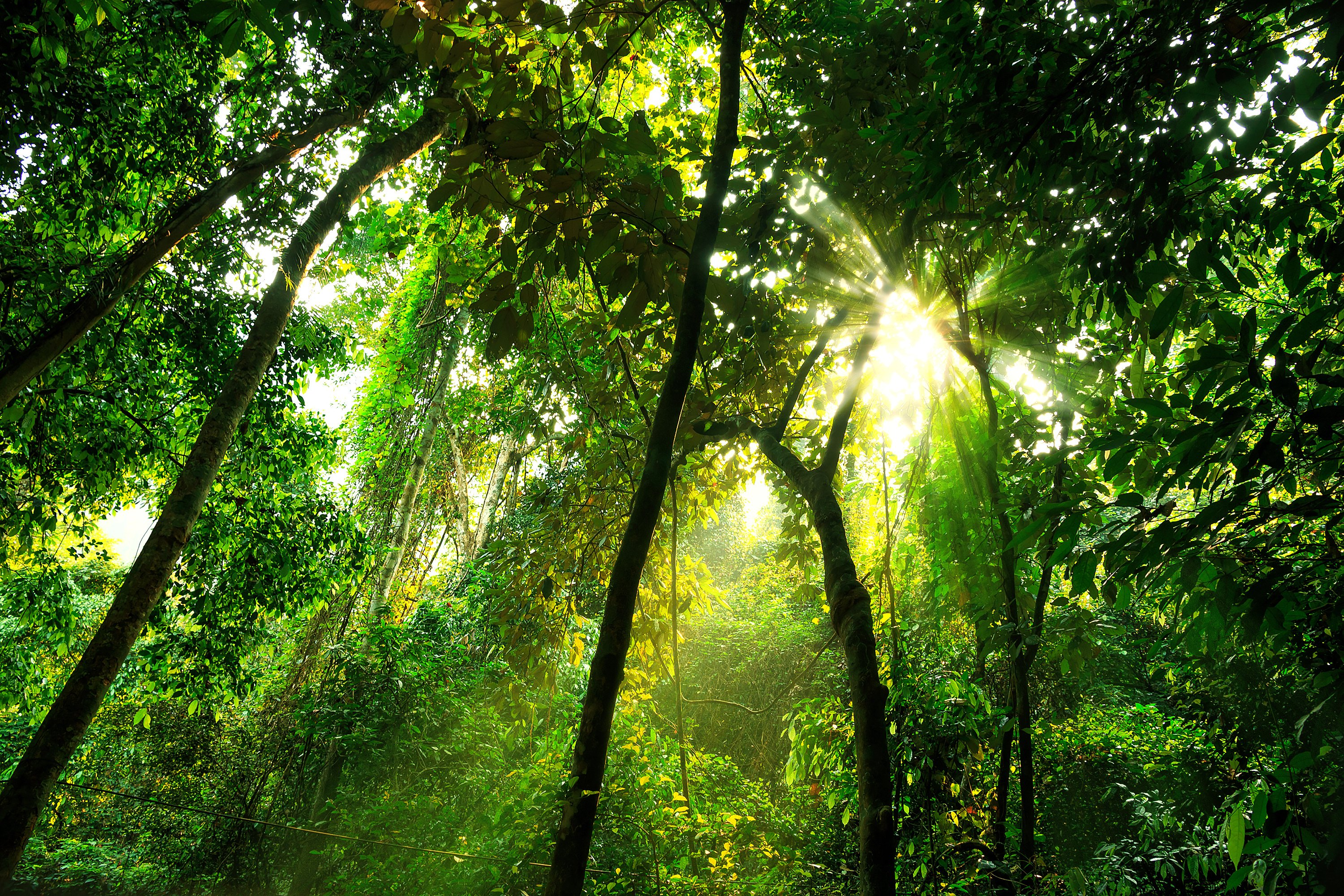
Tropical Forest Canopy: Insights from NASA Technology
The tropical forest canopy, often called the Earth’s lungs, plays a vital role in maintaining global ecological balance. With recent advancements in NASA technology, scientists are now able to analyze the impacts of climate change on these biodiverse systems through precise LiDAR measurements. This innovative approach not only highlights the importance of forest health but also emphasizes the significant carbon storage capabilities of these towering canopies. As researchers uncover the environmental drivers affecting tropical forest canopy height, the need for conservation has never been clearer. Understanding how climate change impacts these vital ecosystems is essential for developing strategies aimed at preserving their biodiversity and carbon sequestration potential.
Often referred to as the uppermost layer of trees in dense forests, the tropical forest canopy is essential for ecosystem stability and health. Utilizing cutting-edge remote sensing technologies, specifically from NASA’s Global Ecosystem Dynamics Investigation, scientists delve into how climate fluctuations affect these vital layers of greenery. This analysis reveals significant insights into carbon storage, forest vitality, and the broader implications of environmental change on these unique habitats. As we explore the factors influencing canopy structure—from temperature changes to drought impact—we gain critical knowledge necessary for effective conservation efforts. Ultimately, safeguarding these diverse layers not only benefits the environment but is crucial in the global fight against climate change.
Exploring the Role of Tropical Forest Canopy in Climate Resilience
The tropical forest canopy serves as a vital component of our planet’s ecosystem, playing a significant role in climate resilience. Research indicates that taller forest canopies are associated with enhanced carbon storage and ecosystem productivity. This means that maintaining and protecting these canopies is crucial in our efforts to mitigate climate change impacts. By understanding the structural dynamics of the canopy, scientists can better assess the health of these forests and predict how they will respond to the ongoing changes in our climate.
Studies utilizing NASA technology, particularly the LiDAR measurements from GEDI, have shed light on the intricate relationships between canopy height, carbon storage, and climatic factors. This detailed understanding enables researchers to visualize how different environmental drivers influence forest health, particularly in vulnerable regions such as the southern Amazon. Hence, the tropical forest canopy not only acts as a carbon sink but also helps sustain biodiversity, further underscoring its importance in combating global warming.
Frequently Asked Questions
What role does the Tropical Forest Canopy play in carbon storage?
The Tropical Forest Canopy is crucial for carbon storage as it comprises the upper layer of mature trees, which are linked to higher carbon sequestration and greater above-ground biomass. This canopy acts as a significant indicator of forest health, helping to mitigate climate change effects by storing carbon.
How does NASA technology help in studying the Tropical Forest Canopy?
NASA technology, particularly the GEDI LiDAR laser instrument on the International Space Station, aids scientists in studying the Tropical Forest Canopy by providing detailed measurements of canopy height. This data helps assess forest health and monitor the impacts of climate change on ecosystems.
What impacts does climate change have on the Tropical Forest Canopy?
Climate change significantly impacts the Tropical Forest Canopy, leading to variations in canopy height due to factors like heat and drought. Regions such as the southern Amazon are particularly vulnerable, where extended dry seasons threaten canopy stability and health.
Why is the health of the Tropical Forest Canopy important for ecosystem productivity?
The health of the Tropical Forest Canopy is vital for ecosystem productivity because taller canopies are associated with increased above-ground biomass and greater capacity for carbon storage. A healthy canopy also supports microclimatic conditions, enhancing resilience against climate extremes.
What are LiDAR measurements and their significance for Tropical Forest Canopy studies?
LiDAR measurements, particularly from NASA’s GEDI technology, are significant for Tropical Forest Canopy studies as they provide high-resolution data about canopy structure. These measurements reveal variations in canopy height and density, which are critical for understanding forest health and the effects of climate change.
How can understanding Tropical Forest Canopy height variation aid in climate change mitigation?
Understanding Tropical Forest Canopy height variation helps in climate change mitigation by informing conservation strategies. By identifying how different environmental factors affect canopy height, scientists and policymakers can prioritize areas that need protection to maintain carbon storage capabilities and biodiversity.
What regions are most affected by climate change impacts on the Tropical Forest Canopy?
Regions like the southern Amazon, along with parts of Africa and Southeast Asia, are among the most affected by climate change impacts on the Tropical Forest Canopy. These areas experience significant changes in canopy height due to alterations in climate patterns, such as prolonged dry seasons.
How does elevation influence the Tropical Forest Canopy in different regions?
Elevation plays a crucial role in influencing the Tropical Forest Canopy, particularly in regions like the central Amazon and parts of Africa. In these moist areas, elevation is a primary driver of canopy height, affecting tree growth and adaptation to climatic conditions.
What future research is planned regarding Tropical Forest Canopies and climate change?
Future research plans include extending studies beyond primary forests to encompass various global forest types. This broader approach aims to enhance our understanding of the Tropical Forest Canopy’s responses to climate change and to influence conservation policy effectively.
Why are Tropical Forest Canopies considered biodiversity hotspots?
Tropical Forest Canopies are considered biodiversity hotspots because they host a diverse array of species and ecosystems. Their complex structure supports various habitats, making them vital for maintaining biodiversity and ecological balance, while also providing essential carbon storage.
| Key Point | Description |
|---|---|
| Importance of Forest Canopy | The forest canopy serves as a critical indicator of forest health and ecosystem productivity, with taller canopies linked to higher carbon storage. |
| Climate Change Impact | The study shows that climate change factors such as heat and drought significantly influence the height of tropical forest canopies. |
| Research Technology | NASA’s GEDI LiDAR technology allows comprehensive analysis of forest canopies globally, enhancing our understanding beyond previous localized studies. |
| Vulnerability of Southern Amazon | The southern Amazon is identified as particularly vulnerable to climate change, with extended dry seasons affecting canopy height significantly. |
| Environmental Drivers | Key drivers of canopy height include climate, topography, soil properties, elevation, and solar radiation. |
| Future Research and Policy Influence | Further studies aim to expand knowledge into other forest types, guiding policymakers on the importance of protecting tropical forests. |
Summary
The topic of Tropical Forest Canopy is of paramount importance as it plays a vital role in assessing the health of our planet’s ecosystems. Recent studies, particularly those utilizing NASA’s advanced LiDAR technology, have illuminated the pressing challenges these canopies face due to climate change. Understanding these dynamics not only highlights the need for conservation efforts but also emphasizes tropical forests’ critical function in carbon sequestration. As we move forward, prioritizing the protection of these invaluable resources is essential in combatting climate change and preserving biodiversity.








